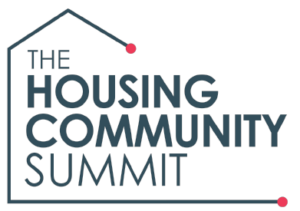Compliance for Social Housing
When I was thinking about what to cover in a piece on compliance, it struck me that compliance may well mean different things to different people. To the finance and housing departments, compliance may be about HCA governance and IDAs while those involved in Asset Management would have a different definition.
Well, as you’d expect, I come at this from an Asset Management viewpoint and, from that perspective, most people would agree that there are five main areas:
- Gas Safety
- Electrical Safety
- Legionella
- Fire Risk
- Asbestos
Sometimes, lifts are added to this list, but these are in people’s minds because either they affect many properties, or the effect of an incident is significant. They are the ones which have statutory regulation in place, on which you will be audited and where sanctions include jail for non-compliance.
Having said this, however, there are many other areas of compliance which should not be overlooked. In theory, anything for which you have a service or inspection contract/regime in place falls into this category. If there was no risk, even if only of inconvenience, to customers, visitors or staff, there would be no need for the servicing or inspections. These may include:
- Lifts
- Door entry systems
- Automatic door/barrier Systems
- Play areas
- Grounds maintenance
- Trees
- Fire alarms
- Fire fighting systems
- CO/smoke/heat detection
- Bath hoists
- Communal generators
- Emergency lighting
- Communal air handling plant
- Lightning conductors
- Commercial kitchen appliances
- Commercial laundry equipment
- Building energy management
- Domestic white goods
- Dry risers
- Smoke vent and louvre systems
- Solar panels
- PV panels
- CCTV
- Air conditioning
- Intruder alarms
And more….
What about other standards against which you are measured, such as Decent Homes/SHQS/WHQS and HHSRS? Do these come under the “Compliance” banner? They may well do, so you may have to broaden your thinking to consider all such areas and to ask whether you have regimes in place and, if you do, are they being effectively monitored and managed.
Historically spreadsheets have been king and, even now when there are effective systems in place in an organisation, it is not unusual to find that someone has developed a spreadsheet or even procured a separate piece of specialist software, to monitor an individual compliance area. This is usually because firstly, people still work in silos and don’t know or care that there are systems in place and, secondly, because there is no overall strategy in place or being effected to pull these threads together.
Compliance has to be regarded as a top-down issue. A Strategic Compliance Framework needs to be in place to guide the board and managers. It is not good enough to just appoint a compliance manager or, worse still, rely on individual managers for different compliance areas. An organisation needs to be able to rely on there being a single version of the truth derived from a single validated property list and a consistent approach to managing the processes involved.
Such a compliance framework ensures that policies and systems are kept abreast of the latest legislative changes (for example, when the HSE brought in MOT style servicing for gas appliances or, more recently, the measures in the building and fire safety acts)
A framework will also assign responsibility. In this context, I mean that areas of compliance should have nominated owners within the organisation. This is not the same as the “Responsible Person” in the regulations which, in most cases, means the RSL. This allows for Building Safety Managers, Asbestos Duty Holders as well as individual compliance area specialists.
A framework may also put in place a system of independent quality audits of field work. If you don’t audit your contractor’s work, are you certain of the quality of their servicing and inspections?
With such a framework, a board will be able to be assured that an organisation is compliant by asking:
- Do we know what the key regulation, legislation, and codes of practice are and how to respond/adhere to them?
- Do we know who owns each area of compliance both strategically and operationally?
- Do we have clarity on how we manage risk by having a signed policy and associated procedures in each compliance area?
- Do we have clarity on control, control owners and control evaluation?
When they also ask, “How can we be assured that we are fully compliant?” then the answer has to be that there is a proper management system in place with reliable reporting on data that is being properly and consistently maintained.
So, what functionality should a software solution for compliance management offer? In my view, the following is a reasonable list:
- Individual items requiring servicing or inspection should allow multiple cycles to be in operation, allowing for separate actions for each cycle (for example, a lift may have annual, quarterly and monthly actions). They should also, where relevant, be assigned to service contracts/contractors.
- All service and repair visits should be recorded, whether or not the service was completed.
- Certificates, photographs and any relevant documentation should be recorded and viewable for each visit.
- Escalation processes for failed access should be built in and should include the generation and recording of letters and any other communications sent to residents and responsible staff members.
- Where an inspection requires follow up action, that the action is prompted, recorded and there is a full audit trail through to resolution.
- Wherever possible, servicing and inspections managed by the compliance solution should have automatic two-way integration with the Housing/Repairs system, sending jobs out and receiving back appointments, job events such as failed access, completions, certificates, etc.
- Where integration with the Housing/Repairs system is not in place or required, an easily managed set of interfaces for automated bulk loading of data from servicing and inspection contractors and consultants.
- Information on the status of compliance under various headings should be visible to those who need it, both within the compliance system and through integration with other systems.
- Targets and key performance indicators should be established so that dashboards will give an instant picture of compliance performance.
- The facility to maintain data for, and report on, independent quality audits of field work.
- Reporting capability is key as there is a need to measure and demonstrate compliance in all areas.
Of course, if your asset management system can deliver all of this and integrate it with all its other functionality and with your housing and mobile working systems, then you’re onto a winner.
For further information on running Fixed Assets processes visit MRI Asset Management.

Torfaen Council Increases Efficiency, Boosts Revenue and Improves Attendance Outcomes with MRI’s FPN Solution
Key Achievements: 2-4 hours of council admin reduced to just 5-15 minutes per process 10-20 minutes of school admin saved per school request End-to-end process time reduced from 1-3 weeks to 1 day Significant reduction in stress and postage…

